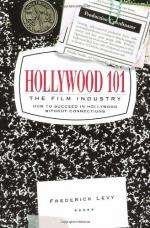|
This section contains 12,739 words (approx. 43 pages at 300 words per page) |

|
By 1900, producers were assuming occasional though still infrequent control over editing and the construction of multi-shot narratives. This slight shift, however, became much more pronounced over the next several years as the production companies appropriated more of the responsibilities that had previously been shared with or determined by the exhibitor. This was particularly pronounced in fiction filmmaking, where centralization of control allowed producers to explore new representational techniques that proved popular among audiences. Although resistance to such a shift occurred with the illustrated lecture or travelogue, exhibitors were generally more and more restricted to supplying the sound accompaniment and acting as programmers. To be sure, these residual responsibilities still merit close attention, since the aggressive use of innovative sound could strongly shape the spectators' experience of the narrative and of the screening more generally. Nevertheless, during the 1900-...
|
This section contains 12,739 words (approx. 43 pages at 300 words per page) |

|


